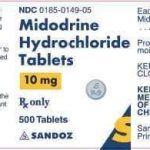Contents
- 1 What Does Strep Throat Look Like?
- 1.0.1 What are other symptoms of strep throat?
- 1.0.2 Is scarlet fever a sign of strep throat?
- 1.0.3 What is streptococcal pharyngitis?
- 1.0.4 How do doctors confirm strep throat?
- 1.0.5 How long does strep throat last?
- 1.0.6 How do you treat strep throat?
- 1.0.7 Risk factors of strep throat
- 1.0.8 Complications of strep throat
What Does Strep Throat Look Like?
Symptoms of strep throat appear 2-5 days after exposure with severe throat pain being the main early-stage sign.
Strep throat is a bacterial infection that causes pain and inflammation in the throat. It can affect people of all ages and is highly contagious.
Since the symptoms of viral and strep throat are similar, extra caution is necessary. Strep throat symptoms usually appear 2-5 days after exposure to the bacteria.
One common early-stage symptom of strep throat in the elderly is severe throat pain. The rapid onset of strep throat is also noticeable.
In addition to pain and swollen tonsils, strep throat may also cause:
- A sore throat without other cold symptoms
- A sore throat with a high fever
- A high fever (over 101°F) accompanying cough and cold
- The body’s response to a streptococcus bacterial infection often includes a high fever
- Even with a mild fever, strep throat should not be ruled out
- If you have a severe sore throat and a fever, see a doctor as fever with strep throat can lead to complications
What are other symptoms of strep throat?
Other symptoms of strep throat include:
- Painful swallowing
- Body aches
- Headaches
- Fine red sandpaper-like rash on the chest and abdomen
- Swollen and tender lymph nodes in the front of the neck
Early detection is crucial for effective strep throat treatment, so these symptoms should not be ignored. If symptoms last longer than 2 days or if other symptoms are present, see a doctor to determine the cause.
Strep throat does not cause coughing, hoarseness, red eyes, or a runny nose. These symptoms indicate a viral infection.
Is scarlet fever a sign of strep throat?
Scarlet fever is a secondary condition caused by the same streptococcus bacteria that infect the throat. It is characterized by a bumpy, pink rash on the skin.
Other symptoms of scarlet fever include:
- Red, sore throat
- Red, bumpy tongue
- Bright red patches on the skin, especially on the elbows, underarms, and groin area
- Abdominal pain
- Nausea
- Vomiting
Scarlet fever is a serious illness that, if not promptly treated, can lead to complications such as kidney disease, pneumonia, or arthritis.
What is streptococcal pharyngitis?
The medical term for strep throat is group A streptococcal pharyngitis. It is a bacterial infection of the tonsils and the back of the throat.
Strep throat is caused by Streptococcus pyogenes, also known as group A streptococcus or GAS. The bacteria spread through respiratory droplets and saliva, often through coughing, sneezing, and sharing utensils or cups.
QUESTION
How do doctors confirm strep throat?
Doctors usually diagnose strep throat based on symptoms but confirm the diagnosis through an oral culture to test for strep bacteria.
- A sample of saliva is collected by swabbing the tonsils and the back of the mouth with a cotton swab.
- A rapid strep test is performed on the sample, which usually takes 10-15 minutes.
- Although the rapid test is highly accurate, it can occasionally produce false negatives.
- If the results are negative, a more accurate test may be performed by swabbing the mouth again and sending the sample for further testing, which can take up to two days.
How long does strep throat last?
Infection with group A strep bacteria can be spread to others until about 12 hours after starting appropriate antibiotic treatment. If left untreated, it can be spread for weeks.
Symptoms of strep throat generally improve within 24-48 hours of starting treatment.
To help relieve a sore throat:
- Drink warm liquids, such as lemon tea or tea with honey
- Gargle with warm salt water several times a day (use half a teaspoon of salt in a cup of water)
- Suck on popsicles, hard candies, or throat lozenges for relief
- Ensure proper rest
How do you treat strep throat?
Strep throat is treated with antibiotics, with penicillin and amoxicillin being effective choices. Complete the full antibiotic regimen even if symptoms improve.
Tylenol can be taken for pain or fever management, and it is important to stay hydrated.
Risk factors of strep throat
Strep throat can affect anyone, but it is most common in school-aged children and adolescents.
Factors that can increase the chances of getting strep throat include:
- Age: Children between 5-15 years of age are more susceptible, although adults can also get it
- Season: Strep infections are most common in late fall and early spring, but can occur at any time of contact with the bacteria
Complications of strep throat
Strep throat should be diagnosed and treated promptly as it can lead to infections in various organs:
- The middle ear: Otitis media can cause fever, ear pain, and hearing loss. Young children may also exhibit fussiness and loss of appetite.
- Meningitis: Although extremely rare, strep throat can lead to meningitis, which causes fever, headache, and stiff neck. Meningitis requires immediate medical attention.
- Kidney problems: Post-streptococcal glomerulonephritis (PSGN) is an inflammatory kidney problem resulting from strep infection. Symptoms include high blood pressure, swelling in the face, hands, and feet, dark reddish-brown urine, fatigue, and decreased urination frequency. PSGN usually resolves within a few weeks without causing long-term kidney damage and is most commonly seen in children under seven years old.
- Rheumatic fever: When strep is not properly treated, it can lead to rheumatic fever, characterized by joint inflammation, arthritis, heart valve damage, fever, hard nodules under the skin, and a skin rash in some cases. Although antibiotics can effectively treat rheumatic fever, any organ damage sustained during the infection may be permanent. Children aged 5-15 years are most at risk.
- PANDAS: PANDAS is associated with strep and is characterized by the onset or worsening of obsessive-compulsive disorder (OCD) or tic disorders like Tourette’s syndrome. Symptoms include OCD, joint pain, hyperactivity, inattention or fidgeting like ADHD, insomnia and bedwetting, mood and emotional changes, and motor skill or handwriting changes. PANDAS can be treated with antibiotics and is most common in children under 12 years old.
The most effective way to prevent illness and spreading the disease is frequent hand-washing with soap and water. If diagnosed with strep throat, it is important to stay home until at least 12 hours after starting antibiotic treatment and no longer having a fever. When coughing or sneezing, always use a tissue to cover the mouth and nose.


